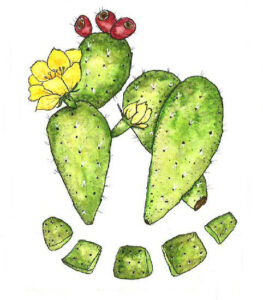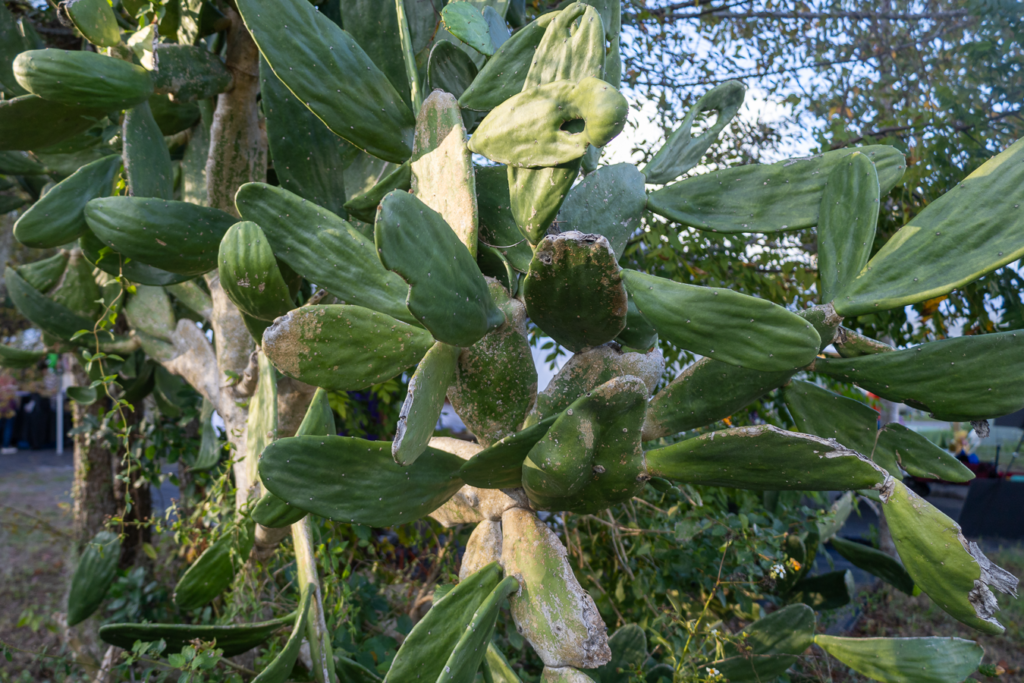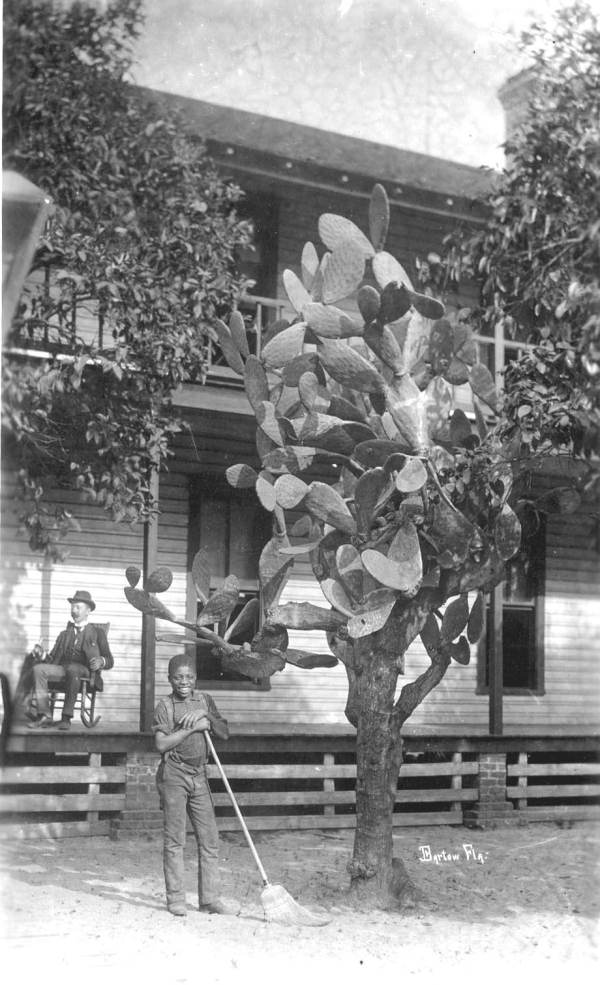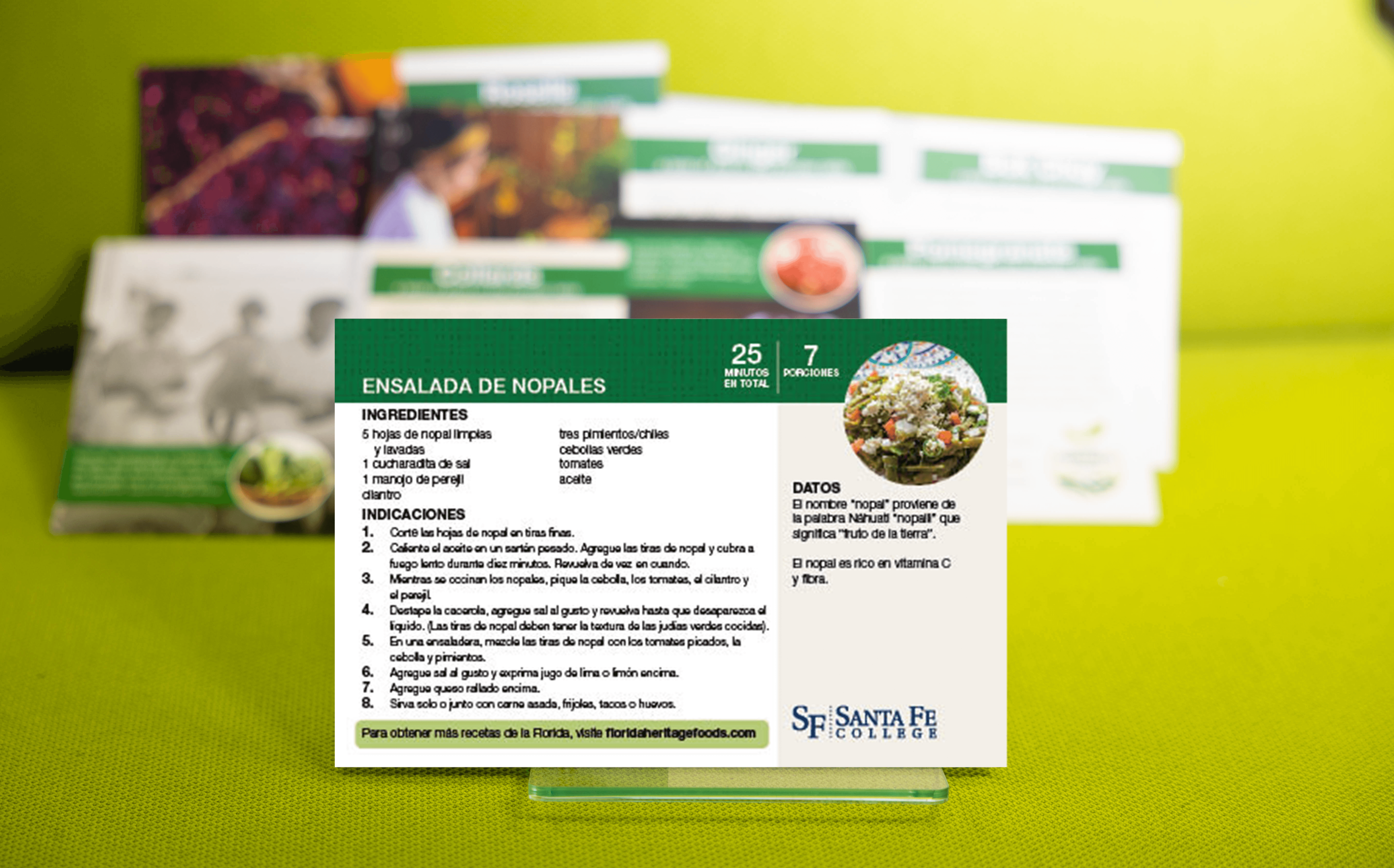Nopal
Opuntia sp.

Prickly pear cactus (English), sabra (Hebrew), cactus du figue barbarie (French, Haiti), Kāṇṭādāra pi’ara (કાંટાદાર પિઅર) (Gujarati)
Nopal is an edible cactus indigenous to Mexico, South America and the south-west regions of the U.S. It was a principle part of Aztec cuisine, and it remains a popular ingredient in Mexican and Texan dishes today. Introduced to Florida by restaurants catering to immigrant populations, the nopal is gaining popularity in the Sunshine State because it is nutritious, delicious and easy to grow in the Florida garden.

The nopal cactus is indigenous to Mexico, South America and the south-western regions of the United States, and it has been used by indigenous peoples in these areas for thousands of years. It was a principle part of Aztec cuisine, and it has been a key ingredient in the staple diet in communities located in dry, desert climates for thousands of years. The name comes from comes from the Nahuatl word nopalli which means ‘fruit of the earth.’ Nopales were initially introduced to Florida by Mexican restaurants catering to both immigrants and the general public. In recent years however, the cactus received greater attention as a nutritious food that is easy and inexpensive to grow and prepare.
Nopales are most popular in Mexican cuisine, and it was highly ritualized and sacred in Aztec culture. Tenochtitlan (Mexico City) was said to have been founded when an eagle with a snake in its mouth landed on a nopal cactus. The image of an eagle with a nopal is featured in the coat of arms on the Mexican flag and on Mexican currency. Nopal remains a common ingredient in many dishes throughout Mexico such as tacos de nopales, huevos con nopales (eggs with nopal), carne con nopales (meat with nopal), and it is used in salads with tomato, onion, and queso panela (panela cheese). The cactus is also popular in the Tejano cultural cuisine of Texas. It is being integrated into Floridian cuisines today, and it can be found in jams, jellies, salsas, beverages, and snacks.



It is easy to plant nopal by burying the pads in well-drained soil and watering until it begins to root. Nopal grows well in poor, sandy soils – too much fertilizer or moisture can encourage disease and pests. It can be planted virtually year-round apart from extreme cold periods. Harvest usually occurs from August through November, yet pads can be harvested any time of the year.
To plan a heritage garden, download the ‘Planning a Florida Heritage Garden (PDF).’

Mitchell, Ralph. “Prickly Pears – Pain and Delight,” UF/IFAS Blogs, UF/IFAS, June 16, 2022.
Lovera, José Rafael., and Ainoa Larrauri. Food Culture in South America. Greenwood Press, 2005.
Schneider, Elizabeth. Vegetables from Amaranth to Zucchini: the Essential Reference: 500 Recipes and 275 Photographs. 1st ed., Morrow, 2001.
'This page produced by Valerie Leitner, Dr. Sarah Cervone, Bhakti Gibson, and Gabriel Frank with content contributed by Javier Espinoza, Veronica Cruz in HUM2461: Latin American Humanities
Santa Fe College Partnered with Multiple Organizations in a Collaborative Effort to Bring Awareness of the Heritage Plants In Florida.
BY CULTURAL HISTORY
BY GROWING SEASON
DROUGHT TOLERANT PLANTS
Commitment to Equal Access and Equal Opportunity
Santa Fe College is committed to an environment that embraces diversity, respects the rights of all individuals, is open and accessible, and is free of harassment and discrimination. For more information, visit sfcollege.edu/eaeo or contact equity.officer@sfcollege.edu.
SACSCOC Accreditation Statement
Santa Fe College is accredited by the Southern Association of Colleges and Schools Commission on Colleges (SACSCOC). For more information, visit sfcollege.edu/sacscoc.
